Great scepticism over chances of ceasefire in Syria holding
by Agency Staff,
2016-02-24 05:58:30.0
SYRIA’s regime on Tuesday agreed to a ceasefire ageement announced by the US and Russia, but widespread doubts existed whether it could take effect by the weekend.
The deal, announced on Monday, does not apply to jihadists such as the Islamic State (IS) group and Al-Nusra Front, putting up major hurdles for implementation on Syria’s complex battlefield.
A Syrian foreign ministry statement said the government would continue to fight both those groups as well as other "terrorists", while agreeing to stop other military operations "in accordance with the Russian-American announcement". The deal calls for a "cessation of hostilities" between forces loyal to President Bashar al-Assad and opposition groups that would take effect overnight on Friday-Saturday in Damascus. The High Negotiations Committee (HNC) — the leading Syrian opposition group — gave its conditional acceptance to the deal late on Monday.
But after several previous failed attempts, few had serious expectations for a lasting ceasefire.
Analysts said the deal may be simply unworkable, rebels on the ground doubted the regime’s goodwill and many civilians expected their hopes to again be dashed.
"It’s a waste of time and it’s difficult to implement on the ground," said Abu Ibrahim, a commander in the 10th Brigade opposition force in the northwestern Latakia province. He expected "numerous rebel groups" to reject the agreement, which he said was formed "without consulting any factions on the ground".
In Damascus, residents tired after nearly five years of war were also deeply sceptical.
"It’s a fragile deal," said Rana, a 54-year-old pharmacist. "Ceasefires have been announced repeatedly in the past and we didn’t see any results on the ground because they were violated."
Despite being on opposing sides of the conflict, Moscow and Washington have been leading the latest diplomatic push to try to resolve a conflict that has left more than 260,000 dead and forced millions from their homes.
Both powers are pursuing separate air wars in Syria, with a US-led coalition targeting IS and occasionally other jihadist groups. Russia says it is targeting "terrorists" in its strikes but has been accused of hitting nonjihadist groups in support of Mr Assad, a longtime ally.
Analysts say that given the facts on the ground — in particular the complicated make-up of Syria’s opposition forces and frequently shifting frontlines — the ceasefire may be doomed to fail.
While IS control over territory is relatively clear and stable, its jihadist rival Al-Nusra Front, the local affiliate of Al-Qaeda, works closely with other rebel groups.
"Cessation of Hostilities allows attacks on Nusra. That likely dooms it, since Russia/regime tend to hit others & call em Nusra (or IS)," Noah Bonsey, a senior analyst at the International Crisis Group, said on Twitter.
Yezid Sayigh of the Carnegie Middle East Centre said the deal presented "a serious opportunity" but "there clearly are significant obstacles and risks".
"An obvious challenge is for other armed opposition groups to stand by while Russia continues strikes against Nusra," Mr Sayigh said.
"Russia and the US will also need to agree some sort of monitoring mechanism … for determining who is responsible for any local breaches of the ceasefire."
The ceasefire plan was announced by top diplomats in Munich earlier this month, but failed to take hold last week as initially planned.
French Foreign Minister Jean-Marc Ayrault on Tuesday hailed the agreement as a "positive announcement", saying he hoped it could lead to the resumption of negotiations in Geneva.
AFP
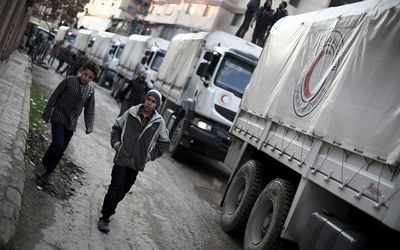
A Red Crescent convoy carrying humanitarian aid arrives ion the outskirts of the capital, Damascus, Syria, on Tuesday. Picture: AFP PHOTO/AMER ALMOHIBANY
SYRIA’s regime on Tuesday agreed to a ceasefire ageement announced by the US and Russia, but widespread doubts existed whether it could take effect by the weekend.
The deal, announced on Monday, does not apply to jihadists such as the Islamic State (IS) group and Al-Nusra Front, putting up major hurdles for implementation on Syria’s complex battlefield.
A Syrian foreign ministry statement said the government would continue to fight both those groups as well as other "terrorists", while agreeing to stop other military operations "in accordance with the Russian-American announcement". The deal calls for a "cessation of hostilities" between forces loyal to President Bashar al-Assad and opposition groups that would take effect overnight on Friday-Saturday in Damascus. The High Negotiations Committee (HNC) — the leading Syrian opposition group — gave its conditional acceptance to the deal late on Monday.
But after several previous failed attempts, few had serious expectations for a lasting ceasefire.
Analysts said the deal may be simply unworkable, rebels on the ground doubted the regime’s goodwill and many civilians expected their hopes to again be dashed.
"It’s a waste of time and it’s difficult to implement on the ground," said Abu Ibrahim, a commander in the 10th Brigade opposition force in the northwestern Latakia province. He expected "numerous rebel groups" to reject the agreement, which he said was formed "without consulting any factions on the ground".
In Damascus, residents tired after nearly five years of war were also deeply sceptical.
"It’s a fragile deal," said Rana, a 54-year-old pharmacist. "Ceasefires have been announced repeatedly in the past and we didn’t see any results on the ground because they were violated."
Despite being on opposing sides of the conflict, Moscow and Washington have been leading the latest diplomatic push to try to resolve a conflict that has left more than 260,000 dead and forced millions from their homes.
Both powers are pursuing separate air wars in Syria, with a US-led coalition targeting IS and occasionally other jihadist groups. Russia says it is targeting "terrorists" in its strikes but has been accused of hitting nonjihadist groups in support of Mr Assad, a longtime ally.
Analysts say that given the facts on the ground — in particular the complicated make-up of Syria’s opposition forces and frequently shifting frontlines — the ceasefire may be doomed to fail.
While IS control over territory is relatively clear and stable, its jihadist rival Al-Nusra Front, the local affiliate of Al-Qaeda, works closely with other rebel groups.
"Cessation of Hostilities allows attacks on Nusra. That likely dooms it, since Russia/regime tend to hit others & call em Nusra (or IS)," Noah Bonsey, a senior analyst at the International Crisis Group, said on Twitter.
Yezid Sayigh of the Carnegie Middle East Centre said the deal presented "a serious opportunity" but "there clearly are significant obstacles and risks".
"An obvious challenge is for other armed opposition groups to stand by while Russia continues strikes against Nusra," Mr Sayigh said.
"Russia and the US will also need to agree some sort of monitoring mechanism … for determining who is responsible for any local breaches of the ceasefire."
The ceasefire plan was announced by top diplomats in Munich earlier this month, but failed to take hold last week as initially planned.
French Foreign Minister Jean-Marc Ayrault on Tuesday hailed the agreement as a "positive announcement", saying he hoped it could lead to the resumption of negotiations in Geneva.
AFP



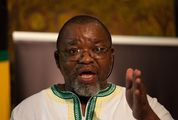
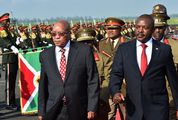
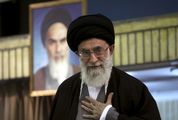
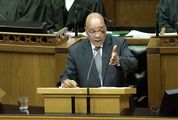






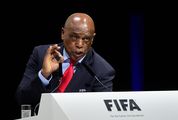








Change: 2.05%
Change: 2.43%
Change: 1.74%
Change: 2.48%
Change: 1.62%
Data supplied by Profile Data
Change: 1.19%
Change: 1.29%
Change: 2.05%
Change: 0.00%
Change: 1.13%
Data supplied by Profile Data
Change: 0.50%
Change: 0.76%
Change: 0.52%
Change: 0.58%
Change: 0.23%
Data supplied by Profile Data
Change: -0.06%
Change: -0.43%
Change: -0.07%
Change: 1.24%
Change: 1.74%
Data supplied by Profile Data